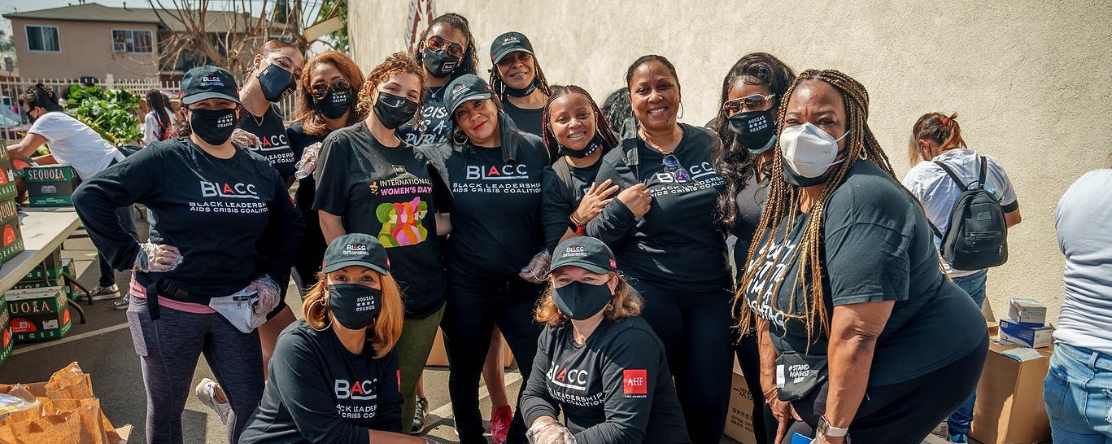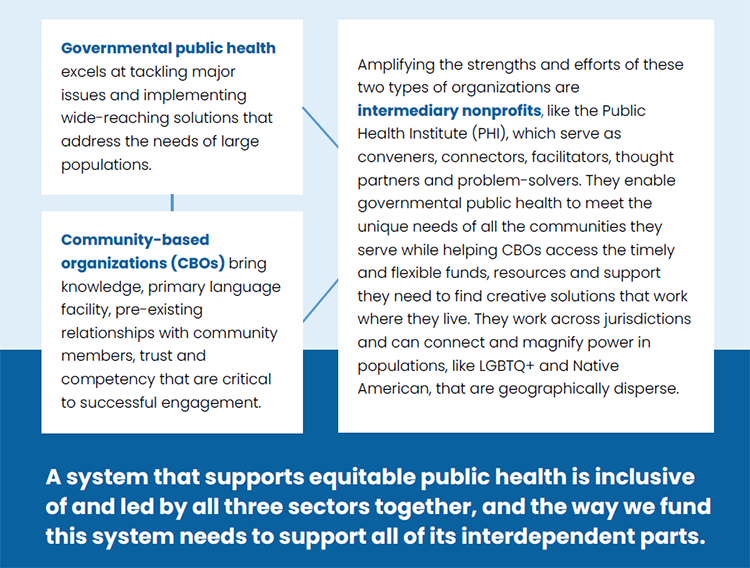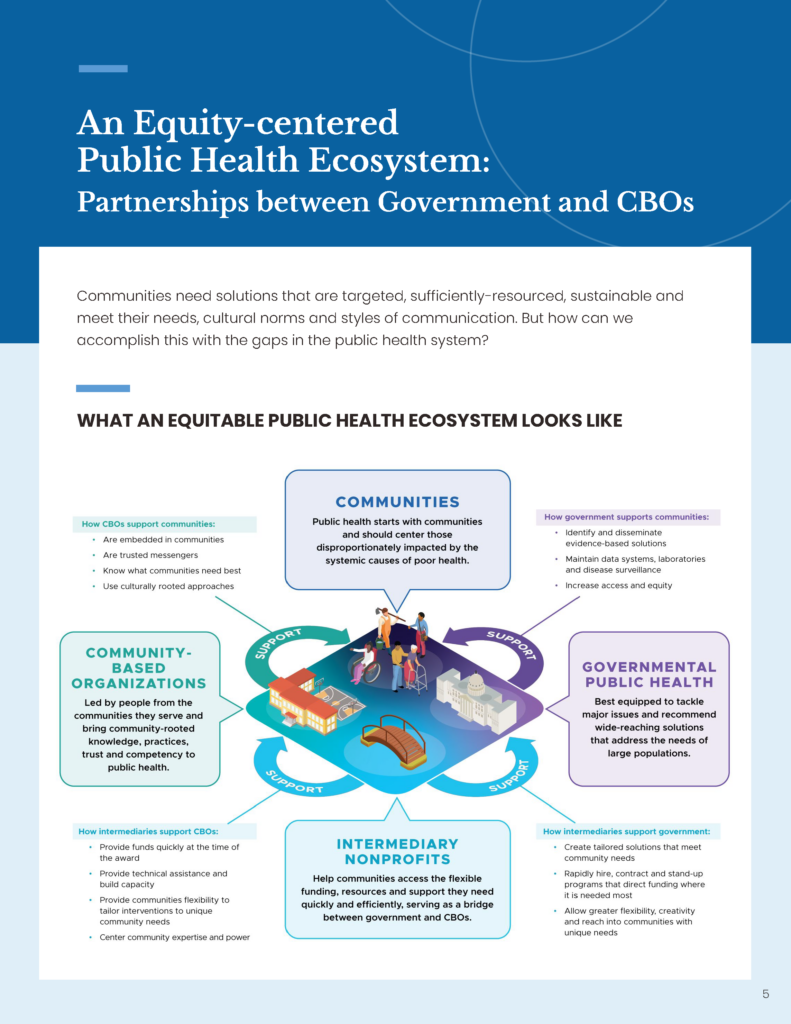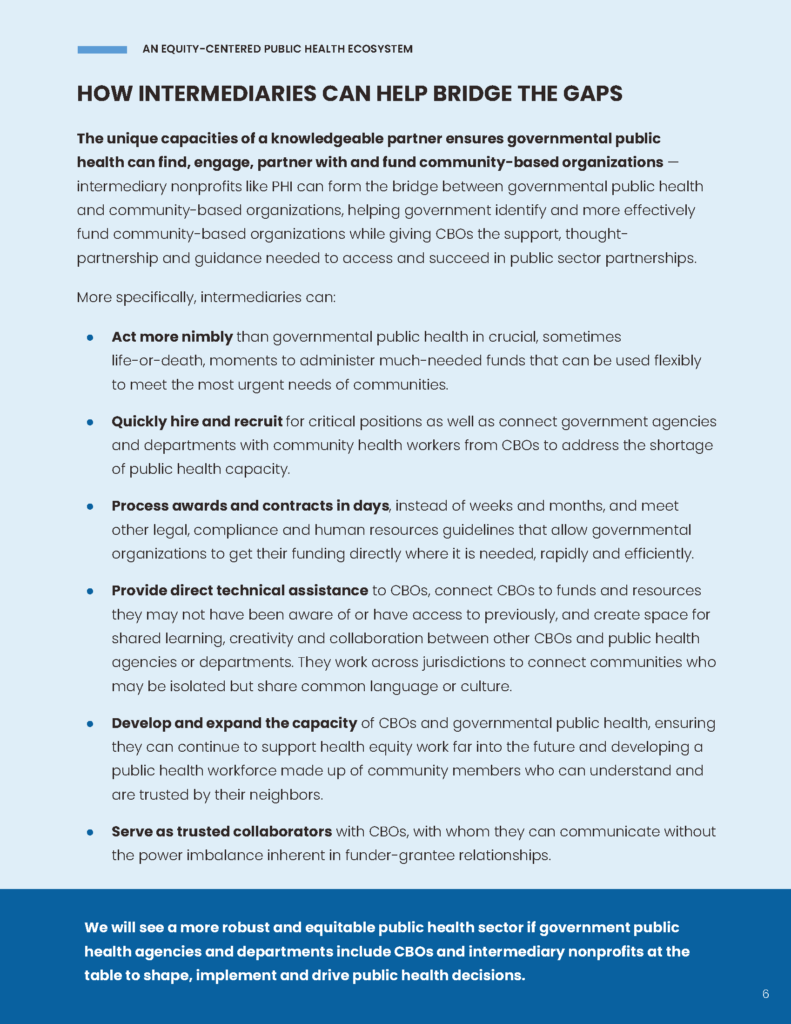
We Are All Public Health: How Public Health Systems Can Support Community Resiliency
-
Focus Areas
Capacity Building & Leadership -
Expertise
Leadership Development

To build stronger public health, we need intentional collaboration between everyone—local and state health departments, federal public health agencies, hospitals and our health care systems, funders including philanthropy, the community-based organizations that know their communities best and the intermediary nonprofits that can help connect it all together. We all have a role to play in applying lessons learned from the shortfalls of an inequitable system, and in collectively moving public health forward.
Health inequities in our most vulnerable communities have existed, persisted and even widened for decades upon decades, and have been perpetuated by gaps in our public health system. Closing these gaps requires the support and leadership of a public health ecosystem comprised of governmental agencies and other sectors, united with community-based organizations, each with its own role to play in achieving health equity.

Health Equity Starts at the Community Level
Major public health crises and chronic issues exacerbate health inequities. Systemic injustices keep many communities from accessing health resources as well as basic needs like nutritious food or stable housing.
It is not realistic, fair or effective for a single entity to address these gaps in our system. We all have a role to play, and we all could use a little help.
What Needs to Happen Next
Decision makers, funders and partners can expand how we think about the public health system to include governmental public health, intermediary nonprofits and community-based organizations and recognize that they all play essential roles.
➔ Ensure that nonprofits and community-based organizations are included as eligible entities for state and federal funding mechanisms.
➔ Fund community-based health efforts and engage intermediary nonprofits’ and CBOs’ expertise to meet the health needs of under-resourced communities.
➔ Support and follow the leadership of community-based organizations. Give them flexibility and trust to do what they do best.
➔ Build up the public health workforce by investing in and training people from the communities they would serve, and creating community health worker and Promotora career pathways and reimbursement mechanisms.
➔ Acknowledge the lessons that have served us well in health crisis situations like the COVID-19 pandemic and apply them to our daily investments in public health.
A stronger, more connected public health ecosystem will not only better prepare us for the next crisis, it will help us build a healthier and more equitable future together.
Work With Us
You change the world. We do the rest. Explore fiscal sponsorship at PHI.
Support Us
Together, we can accelerate our response to public health’s most critical issues.
Find Employment
Begin your career at the Public Health Institute.




